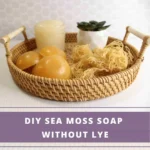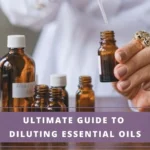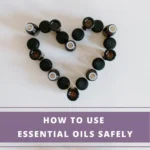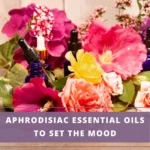As an Amazon Associate I earn from qualifying purchases. See Full Disclosure Here
Once you learn how to make rose oil, you’ll have on hand a wonderfully fragrant and beneficial oil that can be used for skin and hair care, massages, and more.
Before diving into the details, I do want to emphasize that this relates to making rose infused oil, not rose essential oil. There’s a big difference between the two. More details on the differences between rose infused oil and rose essential oil below.
What Is Rose Oil?
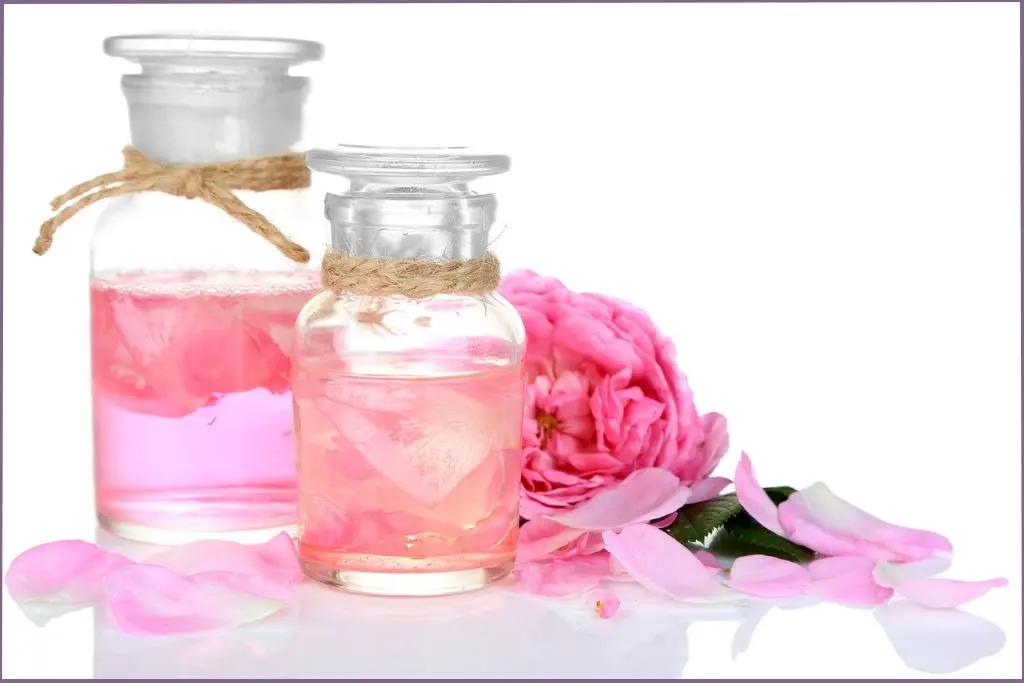
Rose oil is a product of steeping or infusing rose petals in oil.
When fresh or dried rose petals are steeped in carrier oil and left to soak for a few days, the petals release their bioactive components and aroma into the oil.
The release of bioactives into the oil happens through the process of slow maceration, which involves steeping plant material in a solvent for an extended period.
The prolonged soaking time ruptures the cell walls of the rose petals and drives the bioactive compounds from the petals into the oil. The resulting infused oil acquires all the goodness of the rose petals, including the distinctive aroma of roses and the beneficial properties of the bioactive compounds.
There are three different methods you can use to make rose infused oil with dried petals and rose petals.
Below the instructions on how to make rose oil, I’ve listed a few things you need to take into consideration when buying the ingredients and equipment.
How To Make Rose Oil With Dried Petals: Step-By-Step
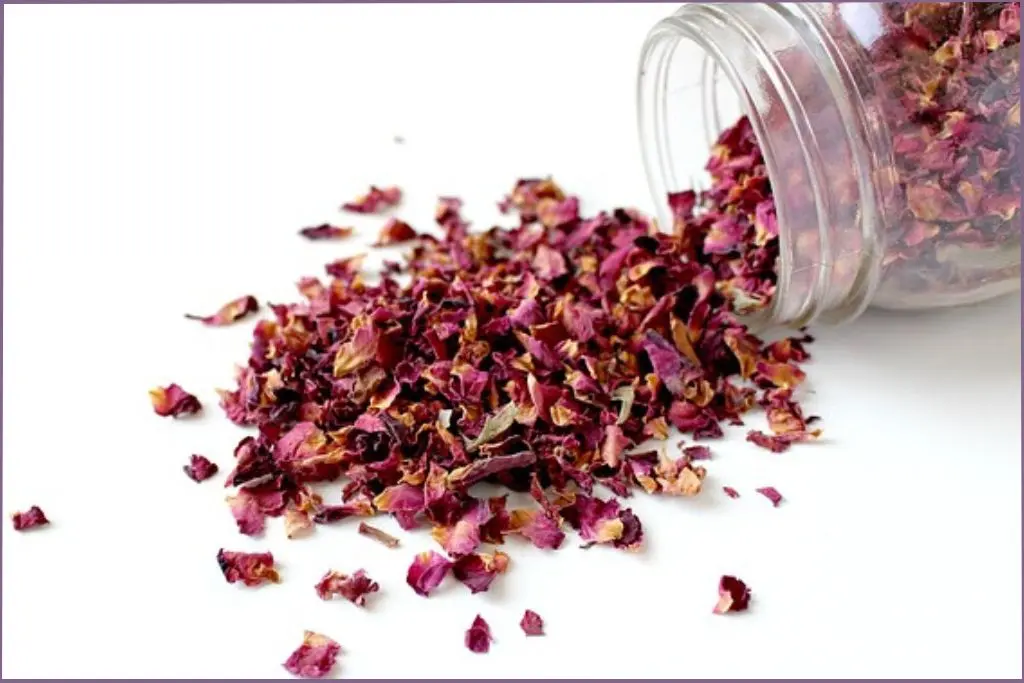
Ingredients
– 1 cup dried rose petals
– 2 cups of carrier oil (such as sweet almond or jojoba)
– Clean, dry glass jar with a tight-fitting lid
– Clean, dry container for storing the contents
Instructions
– Put the dry petals into a clean glass jar leaving enough space to add the carrier oil.
– Pour the carrier oil over the petals, making sure the petals are fully submerged. Fill the jar to the top to prevent air exposure.
– Close the lid tightly and shake or swirl the jar gently to mix the oil and petals.
– Place the jar in a cool, dark place for 2-4 weeks, gently swirling it every few days to help the infusion process.
– After 2-4 weeks, strain the infusion through a strainer or cheesecloth to remove the rose petals.
– Squeeze the cloth to extract as much of the oil as possible. Discard the used petals
– Transfer the rose infusion to a clean, dry glass container for storage.
Your rose infusion is now ready to use!
You can customize your homemade rose oil by adding other botanicals such as lavender, or calendula into the oil along with the flower petals.
How To Make Rose Oil With Fresh Petals: Step By Step

– Harvest or purchase fresh, pesticide-free rose petals.
– Remove any stems, leaves, and other debris from the petals.
– Rinse the petals under cool water to remove any residual dirt or debris.
– Spread the petals out on a clean towel or paper towel to air-dry for a few hours until they are completely dry
– You can also use a dehydrator or an oven set at a low temperature to speed up the drying process
Proceed with the same steps as in how to make rose oil from dried petals.
Making rose oil from dried petals and fresh petals using the above techniques both involve slow maceration of the delicate rose petals.
If you’re in a hurry, use the hot infusion method below, which is a quicker process.
How To Make Rose Infused Oil Fast Using Hot Infusion
Use this hot infusion method when you want to make rose infused oil fast to use in some DIY projects. It involves using heat to speed up the process.
What you’ll need:
– Fresh or dried rose petals
– Carrier oil (such as jojoba or primrose)
– Saucepan
– Thermometer
– Cheesecloth or muslin cloth
Instructions:
Place rose petals in a saucepan.
Pour enough carrier oil over the petals to cover them completely.
Heat the oil and petals on low heat, stirring occasionally, until it reaches a temperature of 140-160°F (60-70°C). Use a thermometer to monitor the temperature.
Keep the mixture at this temperature for 2-3 hours, stirring occasionally.
After 2-3 hours, remove the saucepan from the heat and let it cool to room temperature.
Strain the infusion using cheesecloth or muslin cloth. Squeeze the cloth to extract as much of the oil as possible. Discard the used petals.
Transfer the strained, clear contents to a clean, glass bottle or jar. Store in a cool, dark place.
Tips For Choosing Your Rose Oil Ingredients For Best Results
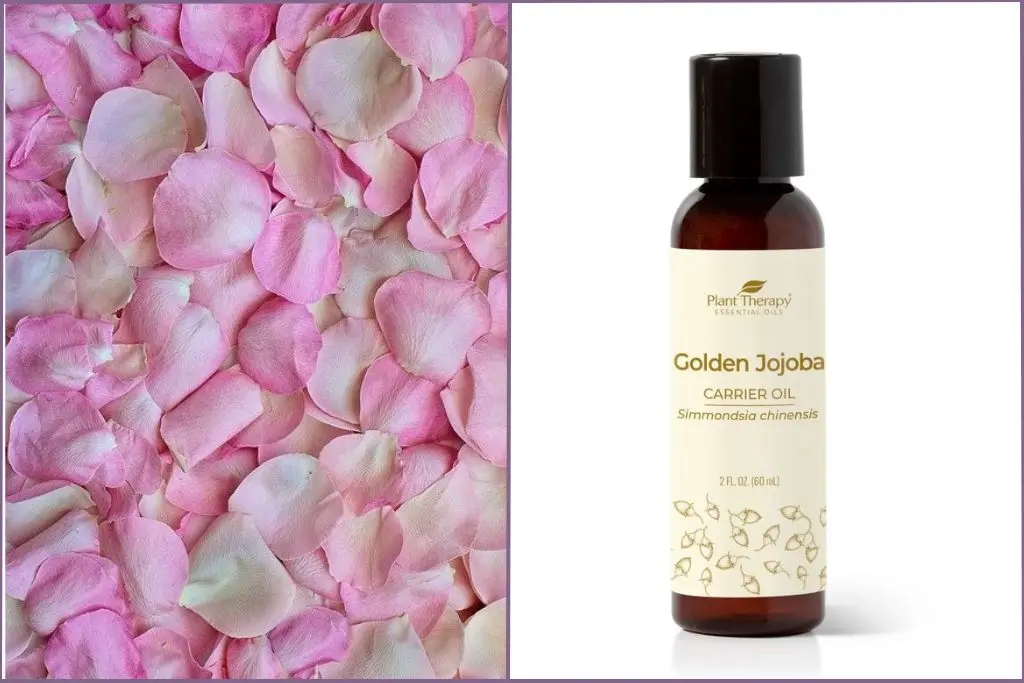
Rose Petals
It’s best to use organic rose petals. This ensures that your homemade rose infused oil is free of any residual pesticides and other chemicals.
When choosing between fresh and dried rose petals, there are a couple of things to think about.
Both are equally good but rose oil with dried petals will be more concentrated and have a longer shelf life. This is because every last drop of water has been extracted from the florals.
Fresh rose petals contain some amount of water, which increases the risks of bacterial and mold growth if kept for too long. The water in the petals also dilutes the concentration of the infusion and may turn the oil rancid.
So:
- If you want to keep your homemade rose infused oil for a longer time, use dried petals.
- If you make rose oil with fresh petals, make only a small quantity at a time and use it up quickly.
- If you’re using fresh roses from your garden, dry the petals well before using them to make infused oil.
CARRIER OIL
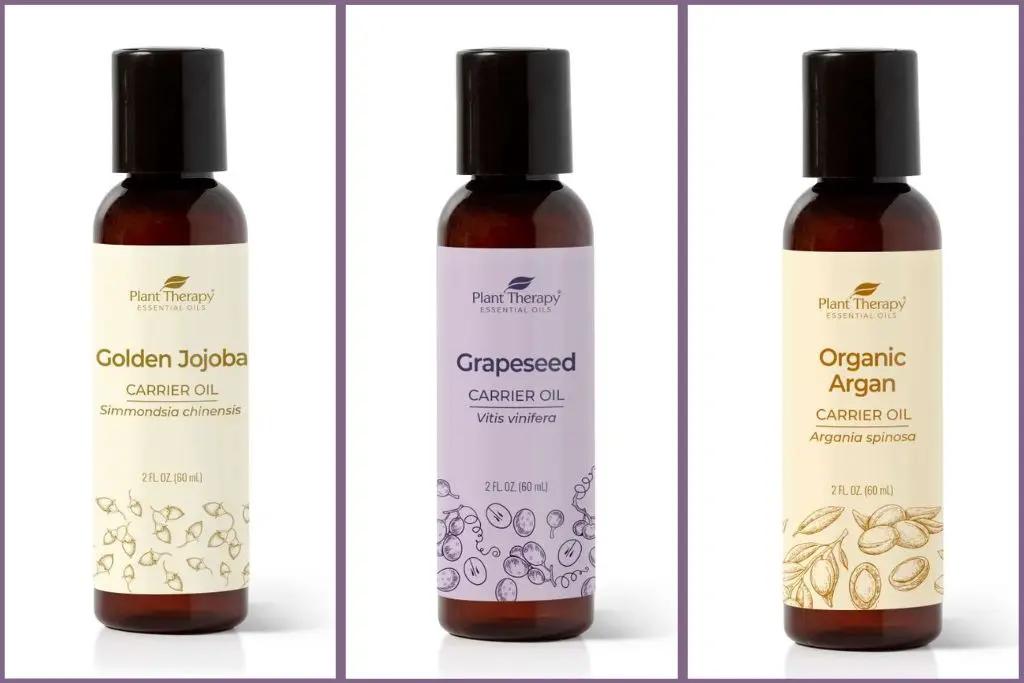
My #1 choice of carrier oil for infusing rose petals is Argan. Intensely moisturizing, non-comedogenic carrier, Argan is great for reducing the appearance of fine lines and wrinkles.
Grapeseed is the best carrier oil to use for making rose infusions for oily skin. Lightweight, non-greasy, and low on the comedogenic scale, grapeseed gets absorbed by the skin easily, nourishing from the inside without adding to skin oiliness.
For combination and oily skin, use Jojoba to make your homemade floral infused oil. Like grapeseed, jojoba is lightweight, non-greasy, and gets absorbed easily into the skin. It is slightly more comedogenic though so it may not be the best choice for very oily skin.
Rosehip is the best carrier oil for reducing fine lines and discoloration, healing scars, and calming rosacea symptoms. Rich in vitamins A and E and fatty acids, Rosehip is lightweight and absorbs into the skin easily.
For dry and sensitive skin, use Sweet Almond Oil. It is highly moisturizing and is excellent for soothing inflamed skin resulting from eczema or acne.
Regardless of which carrier oil you use, what’s important is that you buy only high-quality, unrefined, cold-pressed oil from a reputed company. Don’t compromise on the quality of the carrier oil. Using poor quality ingredients will give you an undesirable extract without the benefits.
Container
Always use a glass jar for making and storing your homemade rose-infused oil. Glass is non-reactive and will keep all the ingredients pure and uncontaminated.
A plastic container is more likely to react with the ingredients and contaminate the infused contents.
The size of the container will depend on the quantity. If you’re making a large batch to give away as gifts, you’ll need a set of smaller glass jars.
You can use clear glass jars for smaller quantities. However, for larger quantities, I recommend using a dark-colored glass bottle as extended exposure to light will shorten the life of the infused oil.
Don’t Have Time To Make Your Own Floral Infused Oil?
Not everyone has the time or inclination to make their own herbal infusions and that’s completely understandable.
If you’re looking for premade options, here are a few that have gotten great reviews.
My top pick is Provence Beauty Rose Multi-Use Oil. It contains an organic blend of Apricot, Vitamin E, and Sweet Almond oils and is an excellent moisturizer for Dry Skin, Scalp & Nails. With over 17,200 five-star reviews, you know you can’t go wrong with this premade rose-infused oil.
Rose Oil Benefits
– Nourishes, hydrates, and rejuvenates the skin, effectively improving skin tone
– Cleanses the skin
– Soothes itchy scalp
– Nourishes and hydrates hair
– Acts as a gentle relaxant
– Reduces anxiety
– Acts as an aphrodisiac
– Has antibacterial and antifungal qualities
Rose Infused Oil vs Rose Essential Oil
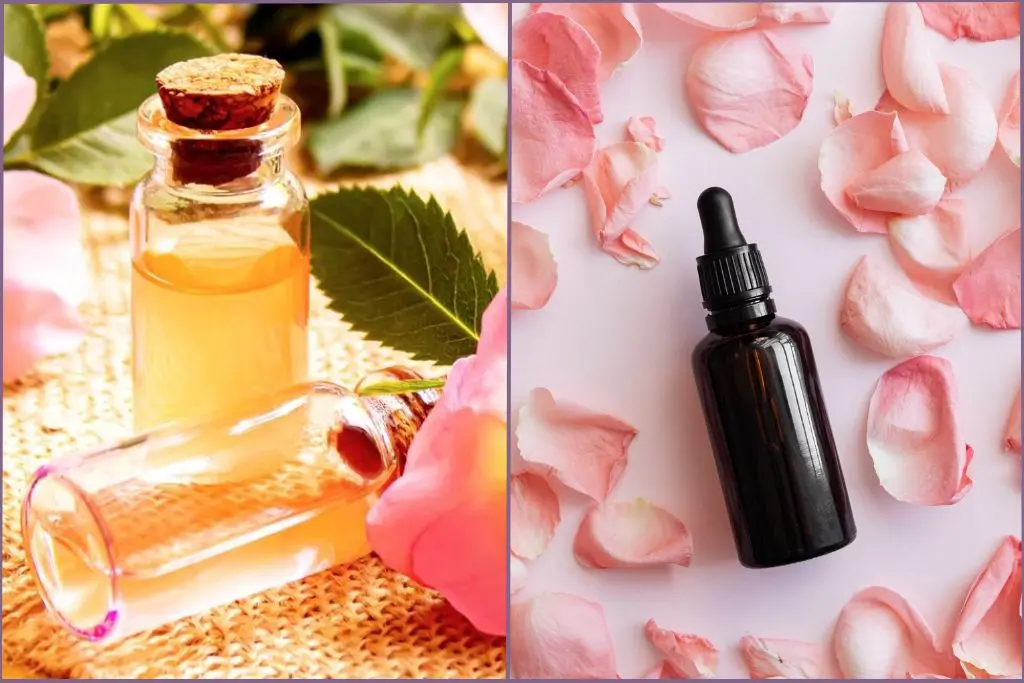
Rose essential oil and rose-infused oil are two different products with distinct properties.
Rose essential oil is extracted from petals using steam distillation and contains highly concentrated rose fragrance and therapeutic properties. This concentrated extract must be diluted with a carrier oil before topical application.
On the other hand, rose-infused oil is created by infusing carrier oil with dried petals, resulting in a milder scent and fewer volatile components of the flower. This infusion is diluted and can be applied to the skin directly.
While both oils offer unique benefits, the choice between the two will depend on your personal preference and what you’re using them for.
Here’s a detailed explanation of infused oils vs. essential oils.
9 Ways To Use Your Homemade Rose Oil
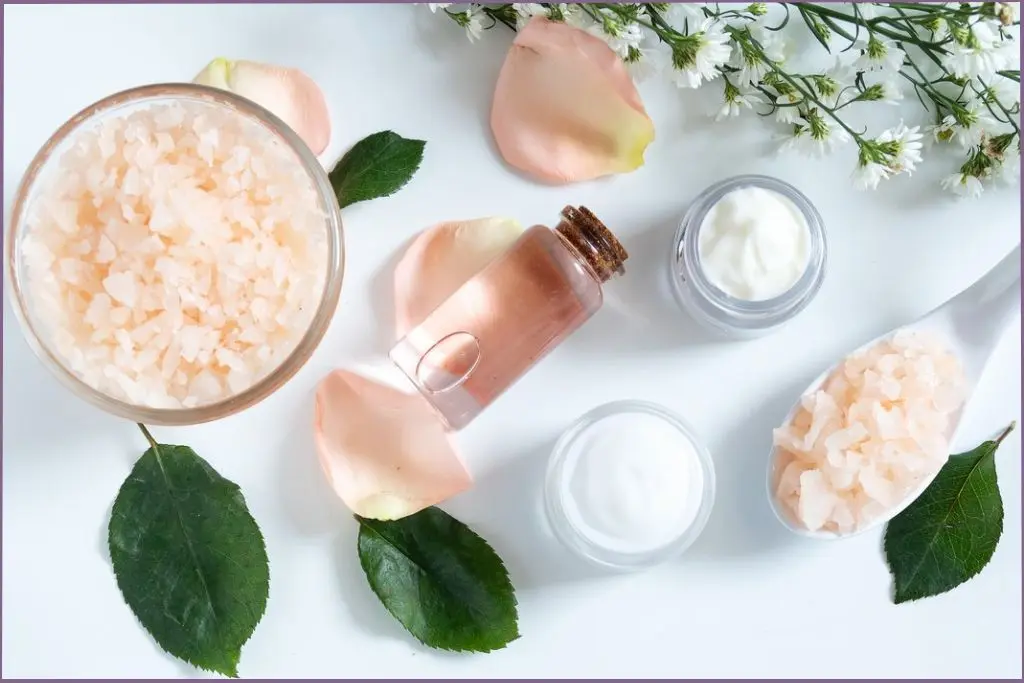
Rose infused oil is versatile and luxurious and can be used in a variety of ways.
Its nourishing and calming properties make it an excellent base for making homemade skincare and bath care products. It is also outstanding as an aromatherapy massage oil.
The best part is no matter how you choose to use it, you’ll be able to enjoy the soft floral perfume of rose.
Here are 8 ways to use rose infused oil in your daily routine.
1. Facial oil
Its hydrating, nourishing, and soothing properties make this infusion great addition to your skincare routine.
To use it as a cleanser, apply a few drops to a cotton pad and gently wipe your face.
To use as a moisturizer, gently massage a few drops of rose oil to clean skin. The oil is very lightweight and can be used as a moisturizer for the delicate skin around the eyes.
Apply gently to soothe and calm irritated or inflamed skin.
2. Body Oil
Rose infused oil can be used as a luxurious body oil.
Apply it all over your body after a shower or bath, and massage it gently to hydrate your skin and leave it feeling soft and smooth.
3. Relaxing Bath Oil
Add a few drops of rose oil to a warm bath to create a luxurious and calming experience.
Its pleasant fragrance helps you unwind and relax, while its skin-friendly ingredients work to nourish and moisturize the skin.
4. Hair Oil
Gently massage the infused oil into your scalp and hair before shampooing. The infusion contains anti-inflammatory and antibacterial properties that help strengthen hair follicles and soothe the scalp.
Here’s another easy way to incorporate rose oil into your haircare routine. Pour a little shampoo into your hand, Add a few drops of the infusion to the shampoo before you wash your hair.
5. Massage Oil
Rose infused oil provides a range of benefits when used as a massage oil.
Its anti-inflammatory and anti-anxiety properties can help to relax muscles, relieve tension, and promote a sense of calm and well-being.
Additionally, the scent of rose petals is a powerful aphrodisiac. Using rose oil as a massage oil can truly ramp up the atmosphere in the bedroom.
6. Base For Homemade Bath & Beauty Products
Rose oil made from organic petals makes a great base for a wide range of homemade bath and beauty products. Use it to make rose bath bombs, rose-scented bath salts, sugar scrubs, soaps, and lip balms.
How to Make Rose Bath Bombs With Rose Oil
How To Make Rose-Scented Bath Salts With Rose Petals
7. Foot Bath
Add two tablespoons of the floral oil to warm water in a foot bath and soak your feet for 10 minutes.
The anti-inflammatory properties of rose infused oil can help to soothe sore muscles and reduce swelling while its hydrating properties help to soften and moisturize dry or rough skin on the feet.
8. Gift It
Homemade rose infused oil makes a lovely gift for any occasion. Package the homemade infusion in a pretty glass bottle and add a few dainty accessories to decorate the bottle. Don’t forget to include a label and handmade card with instructions on how to use the contents!
Do start early so the infusion has enough time to soak up all the flavors and make a big batch at one time so you can gift it generously.
9. Make Your Own Skin Exfoliator With Orange Peel Powder
Combine 1/2 teaspoon orange peel powder with a teaspoon of rose oil. Orange peel powder and rose oil are both rich in several components that are great for the skin. Together, they offer the skin some powerful benefits. Learn how to make orange peel powder for face.
Gently rub this slightly grainy mixture over your face, neck, and arms for smoother skin. The scents of rose and orange complement each other beautifully, with the citrussy notes cutting through the heavily floral rose aroma.
Whether you use it in your skincare routine, as a body oil, in your bath, or as a base for your DIY bath and skin care products, rose infused oil is a versatile and luxurious oil that can help soothe and nourish your skin and calm your mind.
Rose Infused Oil: FAQs
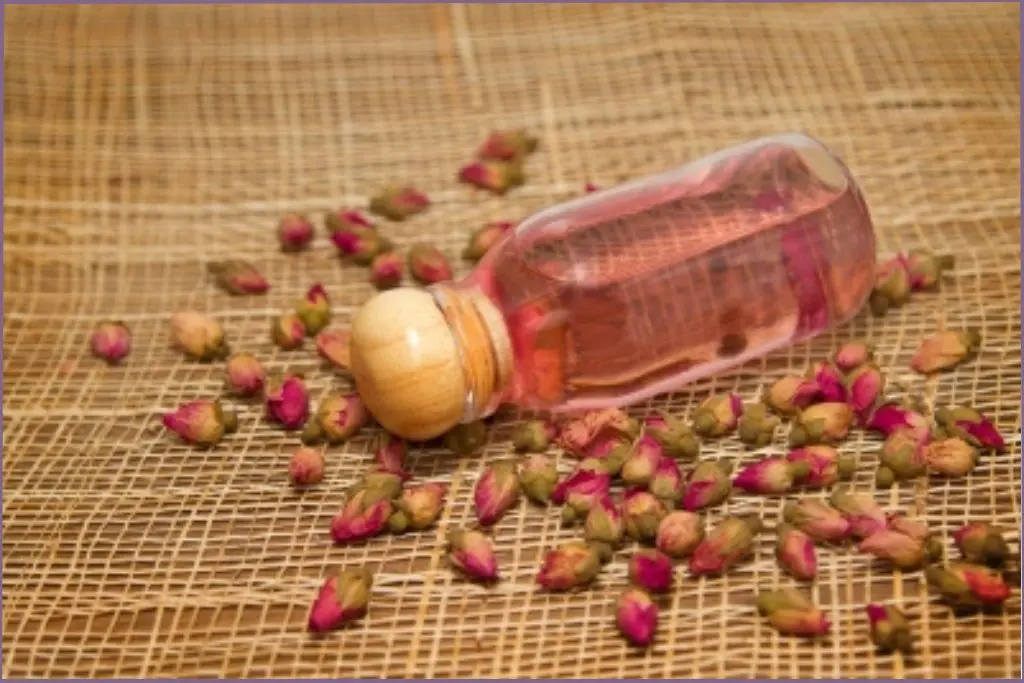
Can I use any type of carrier oil to make this floral infusion?
Yes, you can use a variety of carrier oils to infuse flower petals. Some popular choices include jojoba, grapeseed, and coconut. It’s best to choose one that is lightweight and easily absorbed by the skin.
Is it better to infuse dried or fresh rose petals?
You can infuse either fresh or dried petals. Fresh petals result in a more potent and fragrant extract but it will have a shorter shelf life. Infusions made from dried petals have a slightly subtler aroma but they have a longer shelf life.
How long does it take to make rose infused oil?
The traditional cold infusion method takes 2 to 4 weeks, as the carrier oil needs time to absorb the beneficial properties of the rose petals.
The hot infusion method accelerates the process so your homemade infusion is ready to use within a few hours.
How long does homemade rose oil last?
Homemade rose oil made from dried petals can last up to one year if stored properly in a cool, dark place.
Homemade rose infused oil made from fresh petals will last only up to six weeks. This is because fresh petals contain some amount of water, which can turn the oil rancid if kept for too long.
Can I add other botanicals to the infusion?
Yes, you can add other botanicals such as lavender, chamomile, or calendula to the content for added benefits and fragrance. These botanicals must be added along with the petals and left to infuse so they time to macerate and release their bioactive compounds into the oil.
Disclaimer: This information is not intended to serve as medical advice. Please consult your physician before using essential oils. See Full Disclaimer here.




